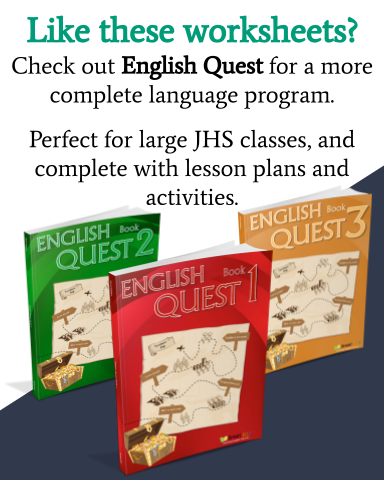The Power of Plus 1
Are you struggling to get your students to give you more information? Would you like them to be able to keep conversations going longer? Do the students’ conversations sound too robotic and forced?
Teaching English in Japan, you are likely to encounter this situation quite often. It is often because of a shyness that, in part, comes from not wanting to stand out which leads to a certain over-politeness in conversation activities, but it also comes from how uncomfortable the students can be made to feel about making mistakes.
I wrote an article for the Japan Student Times a few years back about one of the policies that I have in my class – ‘+1’.
Adding more information in practice
In almost any interview or question and answer grammar practice activity, there are opportunities for students to add an extra detail or two. “What sports do you like?” “I like tennis. It’s fun. I play it everyday after school. I’m good at tennis.”
For lower level students, I start by giving them the pattern they can use to add the extra details. When they answer with the basic response, I give them a gesture (I use the ‘traveling’ gesture in basketball) to elicit the extra information. After a while, the students get used to the gesture and the idea of ‘+1’. In activities that follow this, when students give a basic answer, I can do the gesture and students know what is expected of them. Even if I don’t give them a pattern, they know what they must do and they try hard to come up with something appropriate.
For higher level students, take a topic, e.g. ‘What did you do in summer vacation?” and write it up on the board. Then get a students’ basic answer and write that up on the board, too. Then you elicit a follow up question from the class and write the question and it’s answer on the board, too. This may be repeated for a couple more questions.
Once you have a number of question-answer combinations on the board, read through all the sentences in a dialogue. Next, erase all the follow up questions from the board and ask the student the first question again. This time, motivate them to answer with all the information on the board from start to finish. Do another example with another question, but this time, just elicit the follow up questions, don’t write them down.
With a few patterns like this and the constant reinforcement of a familiar gesture, students get used to the idea of adding more information. In lessons that follow, before starting your drills or interview activities start by reviewing some ‘Wh’ question forms. Then have your gestures ready to go. In many of my classes, the students have started taking on the gestures themselves to encourage their partners to give more information.
In order to make sure the students don’t feel too anxious about adding extra information, try to keep error correction for the extra information to a minimum. As long as the main functional language is correct, after that, as long as it’s understandable, it’s fine. Over-correcting at this stage will just put up more barriers and students will again go back to the safety of their practiced patterns.
I’ve had a lot of success with this and have integrated it into all the my lessons and my testing. It’s another simple way to get the students ‘out of the textbook’ and into using more language in a communicative fashion. Seeing students start to add more information by themselves is motivating for teachers, and as students start experimenting and realizing that the language is working, they get more motivated to try even more.
Getting students to feel comfortable with communicating in English should be a major goal of any English class. With Japan’s heavy focus on testing and accuracy, we need to find ways to break down the walls that have been set in place. I hope you find this step towards that goal to be helpful.
Smart ELT
Ian Daniels.





